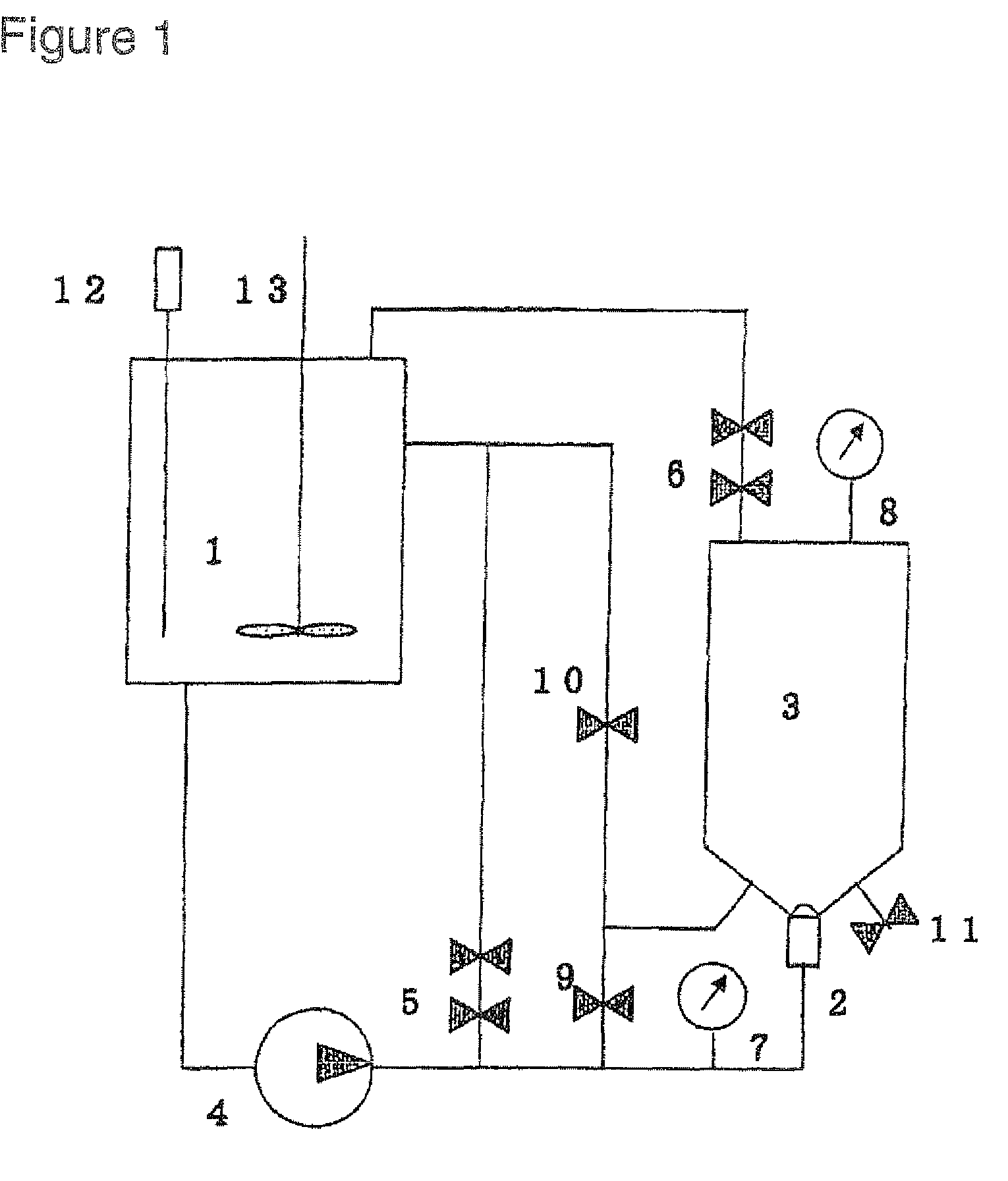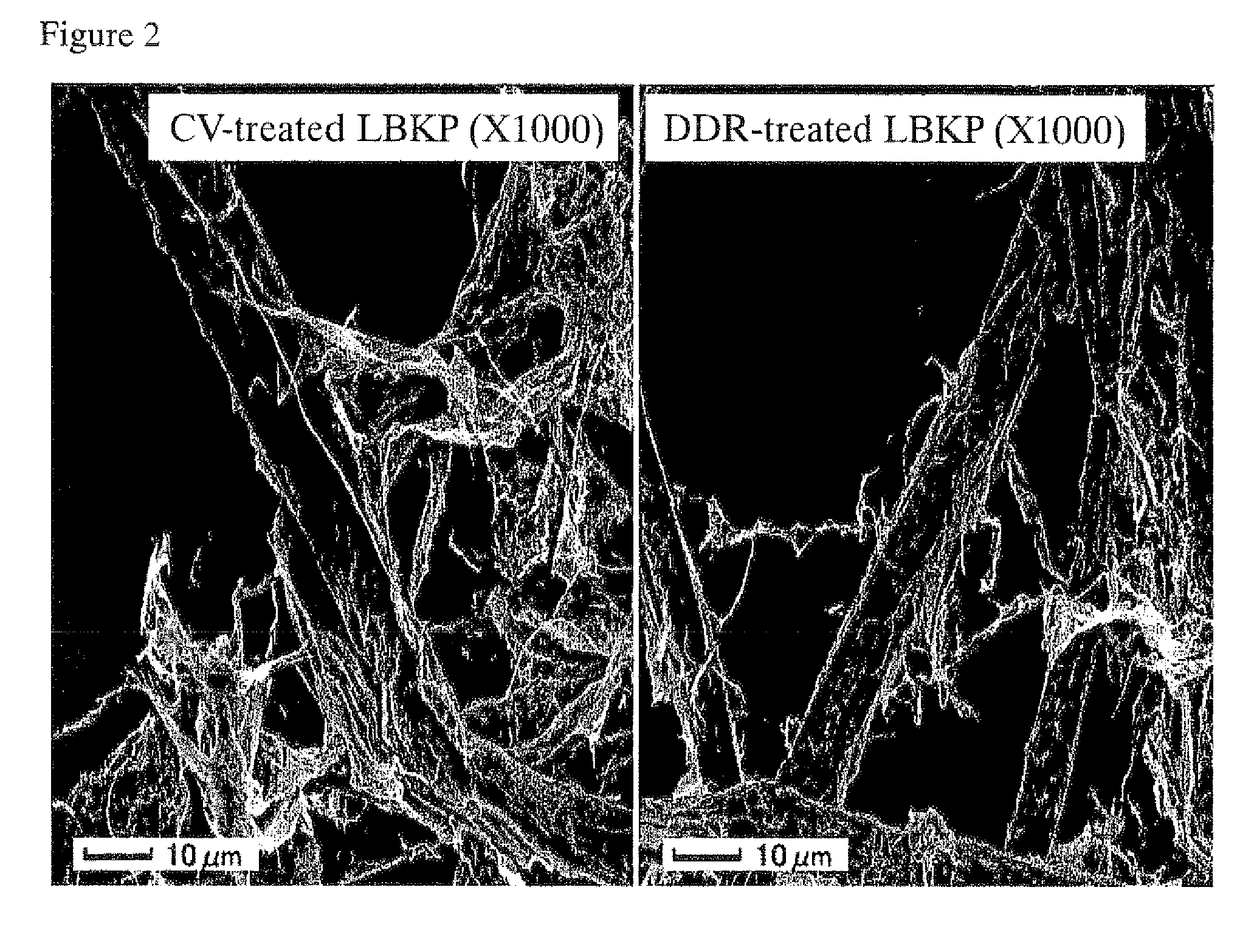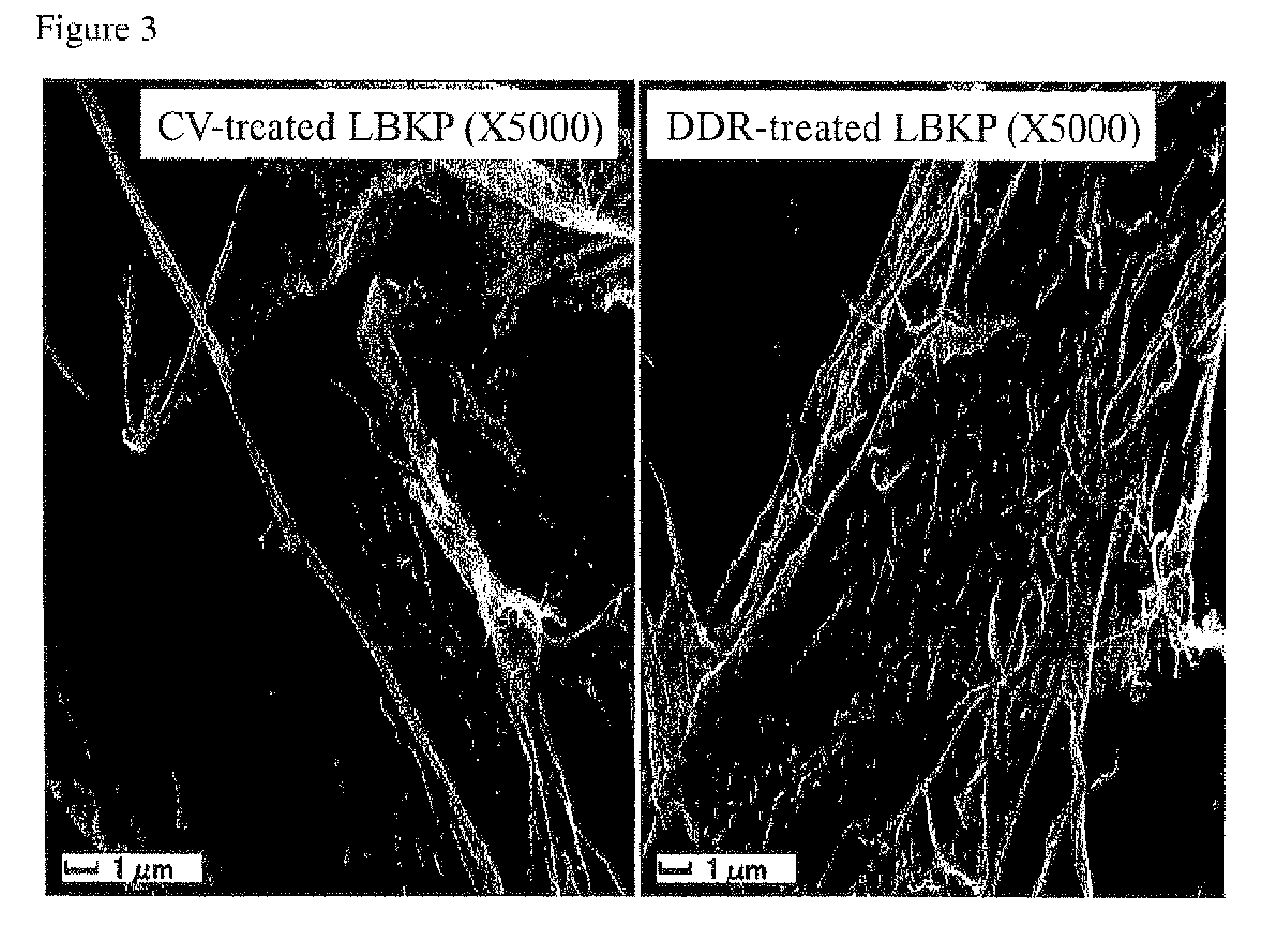Cellulose-based fibrous materials
a cellulose-based, non-wood technology, applied in the direction of reinforcing agent addition, papermaking, calendars, etc., can solve the problems of unavoidable cost increase, significant decrease in paper strength or stiffness, and failure to recycle pulp, etc., to achieve good size stability, low density, and high surface quality
- Summary
- Abstract
- Description
- Claims
- Application Information
AI Technical Summary
Benefits of technology
Problems solved by technology
Method used
Image
Examples
example 1
[0087]A sample (raw material A) was collected from the inlet of a beater (double disc refiner from Aikawa Iron Works Co.) in the finishing step of a bleached hardwood kraft pulp prepared in factory A. Raw material A was adjusted to a desired freeness by using a cavitation jet washer shown in FIG. 1 at a jetting liquid pressure (upstream pressure) of 7 MPa (jet flow rate 70 m / sec.) and a pressure in the target vessel (downstream pressure) of 0.3 MPa. A pulp suspension having a consistency of 1.1% by weight was used as a jetting liquid to treat the pulp suspension (consistency 1.1% by weight) in the vessel by cavitation.
example 2
[0093]A dry sheet of a bleached hardwood kraft pulp prepared in factory B was disintegrated at low consistency and beaten to a Canadian Standard Freeness (CSF) of 566 ml using a Niagara beater to give raw material C. Raw material C was further treated by using a cavitation jet washer in the same manner as described in Example 1 to a Canadian Standard Freeness of 331 ml.
example 3
[0097]A dry sheet of a bleached hardwood kraft pulp prepared in factory B was disintegrated at low consistency and beaten to a Canadian Standard Freeness (CSF) of 566 ml using a Niagara beater to give raw material 1. Raw material C was treated in a Niagara beater to a CSF of 448 ml to give raw material 2, to a CSF of 345 ml to give raw material 3, and to a CSF of 247 ml to give raw material 4. These raw materials 1 to 4 were treated by using a cavitation jet washer in the same manner as described in Example 1 to give pulps of cavitation (CV) treatments 1 to 4. In CV treatments 1 and 2, the number of cavitation treatment cycles was varied to prepare samples having varying Canadian Standard Freenesses.
PUM
| Property | Measurement | Unit |
|---|---|---|
| thickness | aaaaa | aaaaa |
| width | aaaaa | aaaaa |
| width | aaaaa | aaaaa |
Abstract
Description
Claims
Application Information
 Login to View More
Login to View More - R&D
- Intellectual Property
- Life Sciences
- Materials
- Tech Scout
- Unparalleled Data Quality
- Higher Quality Content
- 60% Fewer Hallucinations
Browse by: Latest US Patents, China's latest patents, Technical Efficacy Thesaurus, Application Domain, Technology Topic, Popular Technical Reports.
© 2025 PatSnap. All rights reserved.Legal|Privacy policy|Modern Slavery Act Transparency Statement|Sitemap|About US| Contact US: help@patsnap.com



